The criminal mastermind, Dr. Schism, has died as a result of drinking his latest super-smart serum. Now his minions must divide up his fortune among themselves. As they do, they are trying to get the most so they can control the doctor’s supervillainous empire. Who will take the title of mastermind?
What Is Bequest?
Bequest is a drafting and set collection card-based game for 3-6 players, ages 10 and up, and takes about 30 minutes to play. It’s currently available from your FLGS as well as online retailers such as Amazon at a suggested retail price of $49.99 for a copy of the game. (Amazon currently has it listed for over 45% off MSRP.) Bequest was designed by Marek Tupy and published by WizKids Games, with graphics by Scott Hartman and Daniel Solis.
Bequest Components
Here is what you get in the box:
- 1 gameboard
- 6 splitter boards
- 150 asset cards
- 30 special cards
- 6 reference cards
- 1 score pad
- 1 round tracker
- 12 decision tokens
- 6 character power cards (for advanced game)

All of the gameplay centers around the gameboard. This is where special cards are held and the round tracker is placed.
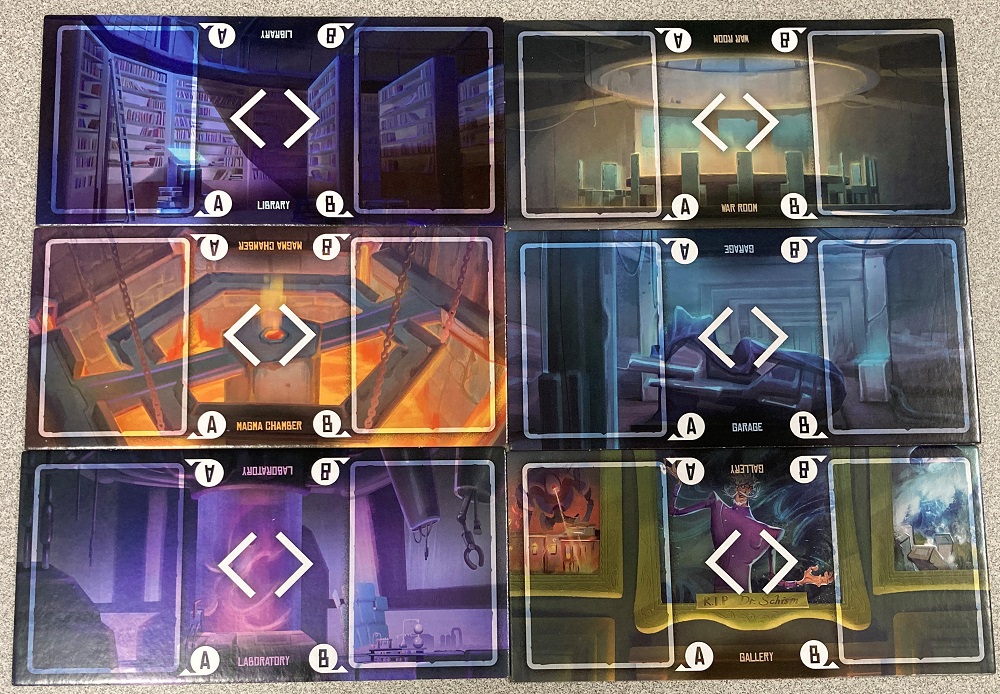
Splitter boards are used to place asset cards once players divide them up.

Asset cards are collected to score points based on their type. Some are worth their face value while others gain value when combined with other asset cards.
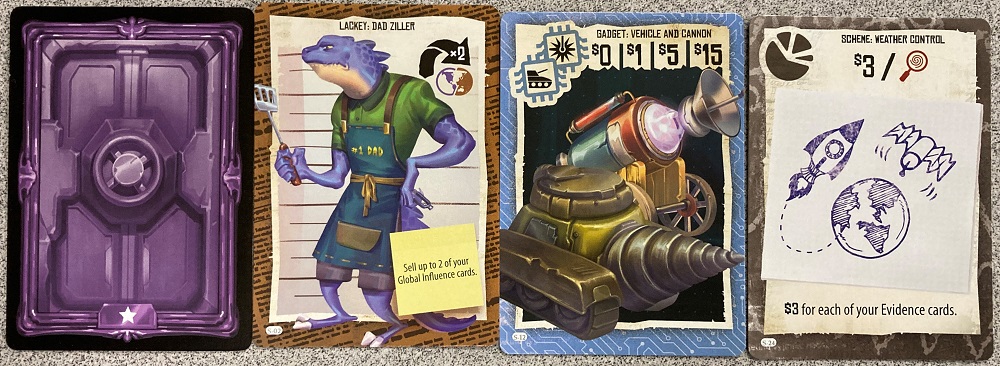
At the end of the round, players who have key asset cards can acquire special cards. These can be worth money in their own right or help increase the value of other asset cards in your collection.

The decision tokens and round tracker are quality plastic with some weight to them. These are not cheap cardboard counters.
How to Play Bequest
You can download a copy of the rulebook here.
The Goal
The goal of the game is to earn the most money after five rounds of play.
Setup
Start off by placing the gameboard in the middle of the player area. Flip the round tracker like a coin and place it on the game board in the spot with the Roman numeral ‘I’. This tracker determines which direction you place asset cards during the game. Next, shuffle the 30 special cards and place them in a stack to the left of the game board. Now you need to prepare the five asset card decks by dividing them by the round number on the back of the card. If playing with less than six players, you will need to remove some cards from each deck depending on how many are playing. Once these cards are removed, shuffle each deck and place them above the matching spot on the game board. Each player takes a reference card as well as an ‘A’ and a ‘B’ decision tokens. Finally place a splitter board between each set of neighboring players. You are now ready to start the game.

Gameplay
Bequest is played over 5 rounds with each round representing a day you spend at Dr. Schism’s lair dividing up his assets. At the start of each round, you reveal special cards from the special card deck and place them on the vacant slots on the game board. You reveal a number of special cards equal to one less than the number of players. Each round is then divided into two phases: split & choose and special card draft.
Split & Choose
From the asset card deck above the current round number, each player draws five cards into their hand. They then split their hand into two stacks and place the stacks face down on the splitter board to their left or right depending on what the round tracker shows. One stack must have 1 or 2 cards and the other stack 3 or 4 cards. Once all players have divided their hands, then each player may look at the cards on the splitter board on their other side. Do not alter the stacks. When a player has decided which stack they want, they place either the A or B decision token face down in-between the two stacks on the splitter board.
After all players have placed their decision tokens, they then take the stack they chose. They then take back the stack from the splitter board on their opposite side that the other player did not take. Both stacks of cards are then placed face up in front of each player to form a card display where the cards are sorted by type so that all players can see how many of each type of card are owned by each player. Finally, take back the decision token.
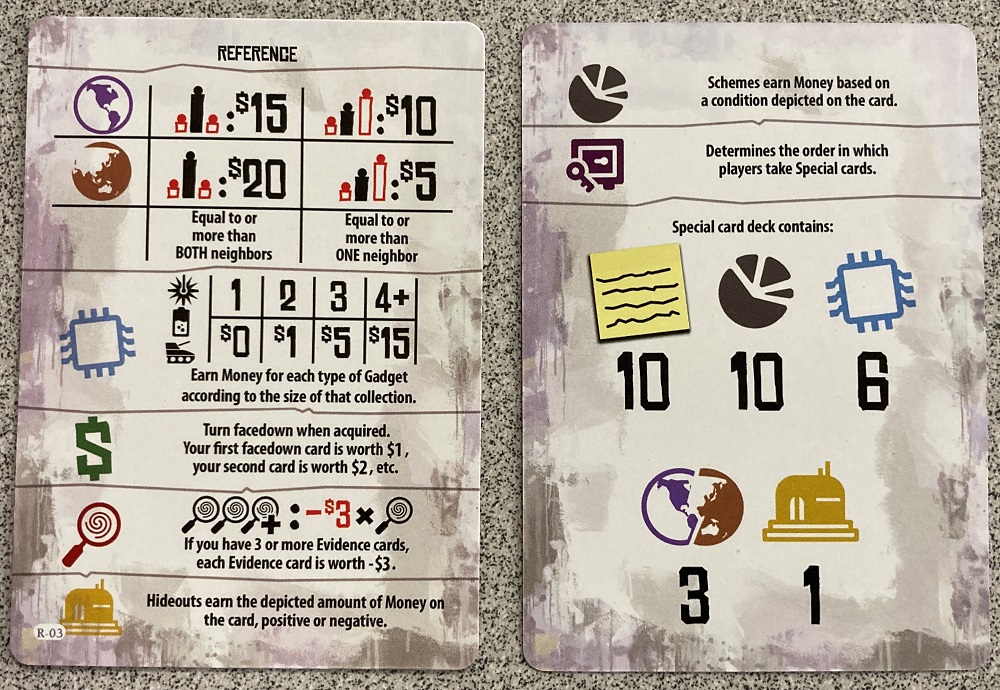
Special Card Draft
It is now time to get those special cards. The player with the #1 key discards that card and can then take any face up special card from the game board and add it to their card display. If a card is played and then discarded, place it in a discard pile to the side of the gameboard. Then the player with the #2 key picks a special card and so forth until all keys have been played. Once all keys have been played, flip the round tracker to its opposite side and move it to the next spot on the game board and start the next round.
Game End
When the players have completed the fifth round, the game is over and it is time to score the cards. The reference card provides details on how to score the various types of cards. Global influence cards earn money based on if you have more of that type of card (western or eastern) than one or both of your neighboring players. Gadget cards come in three types (cannons, power cores, and vehicles) and earn money based of the number of each type of gadgets you have. Treasure cards are flipped over when you get them and worth money based on how many you have. The first treasure card is worth $1, the second $2, the third $3, and so forth. Evidence cards are worth -$3 for each card if you have 3 or more. If you have fewer than 3 evidence cards, you don’t lose any money. Hideouts are worth the amount listed on the card. Some hideouts have a negative value. Schemes earn money based on the conditions listed on the card. Players total up the value of all their cards and the player with the most money is the winner. In case of a tie, the player with the least amount of evidence cards wins.
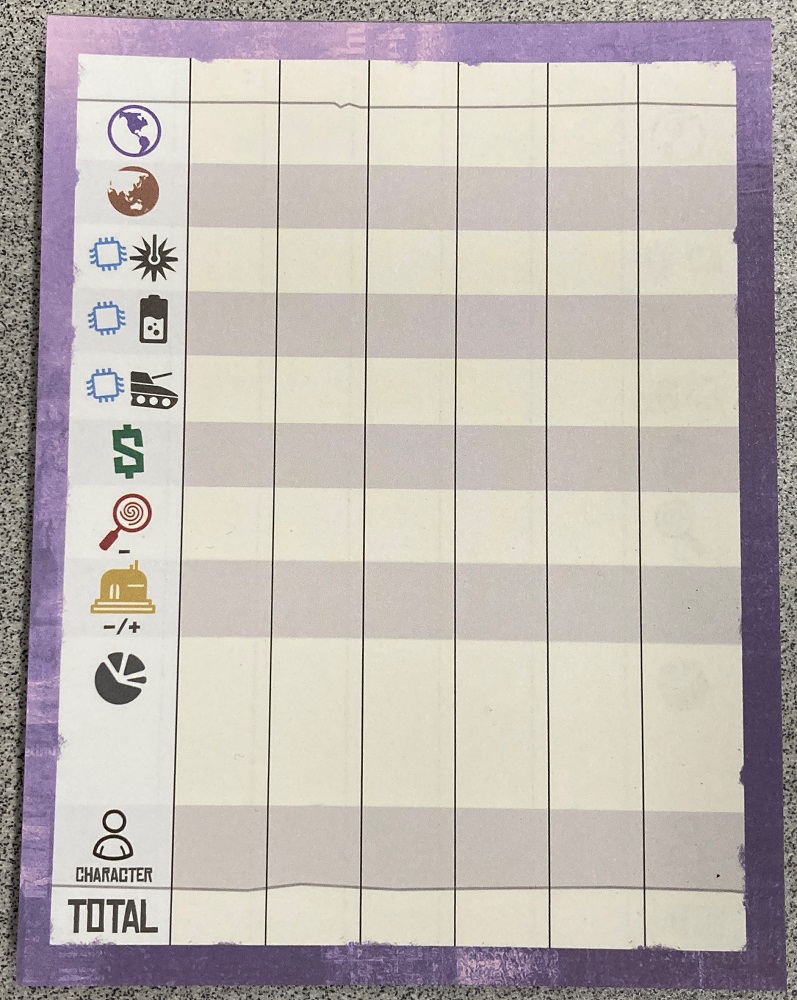
Why You Should Play Bequest
Bequest has a lot of things going for it. The game looks good and is quick to set up and get playing. It is also fairly easy to teach to other people. The game mechanics are simple and how assets are scored at the end is the only thing that could cause some confusion for new players. However, having the reference card in front of each player is a great help. Bequest’s unique take on the drafting mechanic really adds to the game. I really like the challenge of having to divide the five cards in your hand into two stacks from which a neighboring player must choose and then having to pick for yourself from two other stacks created by another neighboring player. Since decisions are secret and revealed at the same time, you have to take into consideration what one player may pick before you pick your own stack. Therefore, you may have to divide up your cards in order to encourage the other player to pick the stack you want them to pick so you can keep the other cards for yourself. This adds a lot of fun strategizing to the game.
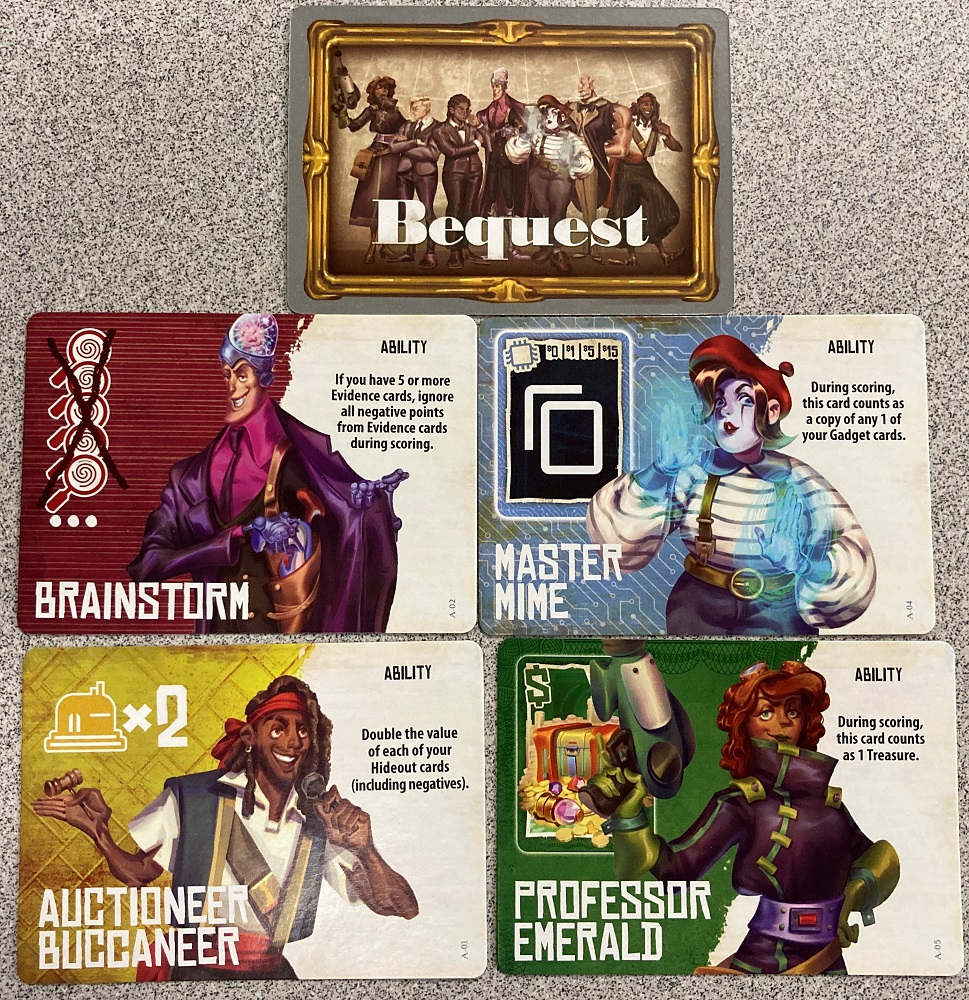
Once you have learned the basic game, you can take it up a notch by adding the character cards. Each player gets a card for one of the six minions, each of which has their own power. Each of these powers are usually focused on one type of asset card. For example, if you have Professor Emerald, you will want to focus on treasure cards while if you have Brainstorm, you are not afraid to take a stack with evidence cards which usually hurt your score. Characters had a fun new element to the game. Furthermore, key cards can be important. While they do not earn you any points, unless you are one of the minions that collects them, they offer you the chance to pick up some great special cards which can really enhance your collection of assets when it comes to scoring at the end.
I really enjoy playing Bequest. In addition to the reasons I stated above, I love the theme. The idea that you are minions dividing up your former boss’ assets really fits the mechanics of the game, especially the ability to try and influence the decisions of other players. Since you can play Bequest in about 30 minutes, it makes a great choice for either starting or ending a game night or for a quick family game. There is no down time since players are always playing simultaneously, which keeps everyone engaged. If you like drafting and set collecting games, or would like to start playing these types of games, I recommend you play Bequest.
For more information, visit the Bequest webpage!
Note: As an Amazon affiliate, I may earn a small commission on qualified purchases.
Click here to see all our tabletop game reviews.
![]() To subscribe to GeekDad’s tabletop gaming coverage, please copy this link and add it to your RSS reader.
To subscribe to GeekDad’s tabletop gaming coverage, please copy this link and add it to your RSS reader.
Disclosure: GeekDad received a copy of this game for review purposes.





